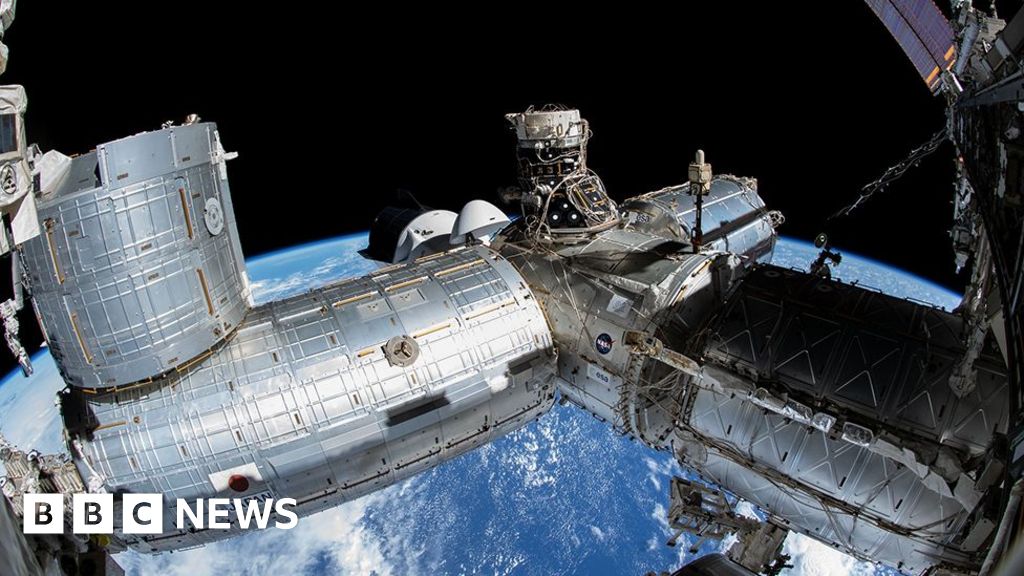
NASA has selected Elon Musk’s SpaceX to drop the International Space Station at the end of its life.
The California-based company will build a vehicle capable of propelling the 430-ton orbital platform into the Pacific Ocean early next decade.
A contract for the work worth up to $843 million (£668 million) was announced on Wednesday.
The first elements of the space station were launched in 1998, and continued manned operations began in 2000.
The station orbits Earth every 90 minutes at an altitude of just over 400 kilometres (250 miles) and has been home to thousands of scientific experiments, investigating all manner of phenomena from the aging process in humans to the composition of new types of materials.
Engineers say the lab remains structurally sound, but plans must now be in place for its eventual disposal. Without help, it will eventually return to Earth on its own, but this poses a great danger to the inhabitants of Earth.
“Selecting a US vehicle to deorbit the International Space Station (ISS) will help NASA and its international partners ensure a safe and responsible transfer into low Earth orbit at the end of station operations. This decision also supports NASA’s plans for future commercial destinations,” Ken Bowersox, the agency’s director of space operations, said in a statement. Statement: “Allows continued use of space near Earth.”
The United States and Russia lead the International Space Station project. Europe, Canada and Japan play supporting roles. All Western partners have agreed to finance the station until 2030; Russia says its participation will extend until at least 2028.
This includes dismantling the station and using newer elements in the next generation platform. Another idea is to simply hand it over to some commercial organization to operate and maintain.
But all of these solutions involve varying degrees of complexity and cost, as well as the legal difficulty of having to resolve ownership issues.
Neither NASA nor SpaceX have published details of the design of the “tug boat” that comes out of orbit, but it will require significant propulsion to safely guide the station into the atmosphere in the right place at the right time.
The platform’s sheer mass and breadth – roughly the dimensions of a football field – means that some structures and components must withstand the return heat and be able to reach the surface.
The controllers will allow the ISS’s orbit to decline naturally over a period of time, and after the last crew is removed, the tugboat will be commanded to perform the final deorbiting maneuver.
The redundant spacecraft are targeting a remote location in the Pacific Ocean known as Point Nemo.
Named after the famous submarine sailor from Jules Verne’s book 20,000 Leagues Under the Sea, the target cemetery is located more than 2,500 kilometers from the nearest plot of land.
NASA hopes that a number of private consortia will have begun launching commercial space stations by the time the International Space Station is taken out of the sky.
The space agencies’ focus will shift to a project to build a platform called Gateway that will orbit the moon.

“Web maven. Infuriatingly humble beer geek. Bacon fanatic. Typical creator. Music expert.”





More Stories
Scientists confirm that monkeys do not have time to write Shakespeare: ScienceAlert
SpaceX launches 23 Starlink satellites from Florida (video and photos)
A new 3D map reveals strange, glowing filaments surrounding the supernova